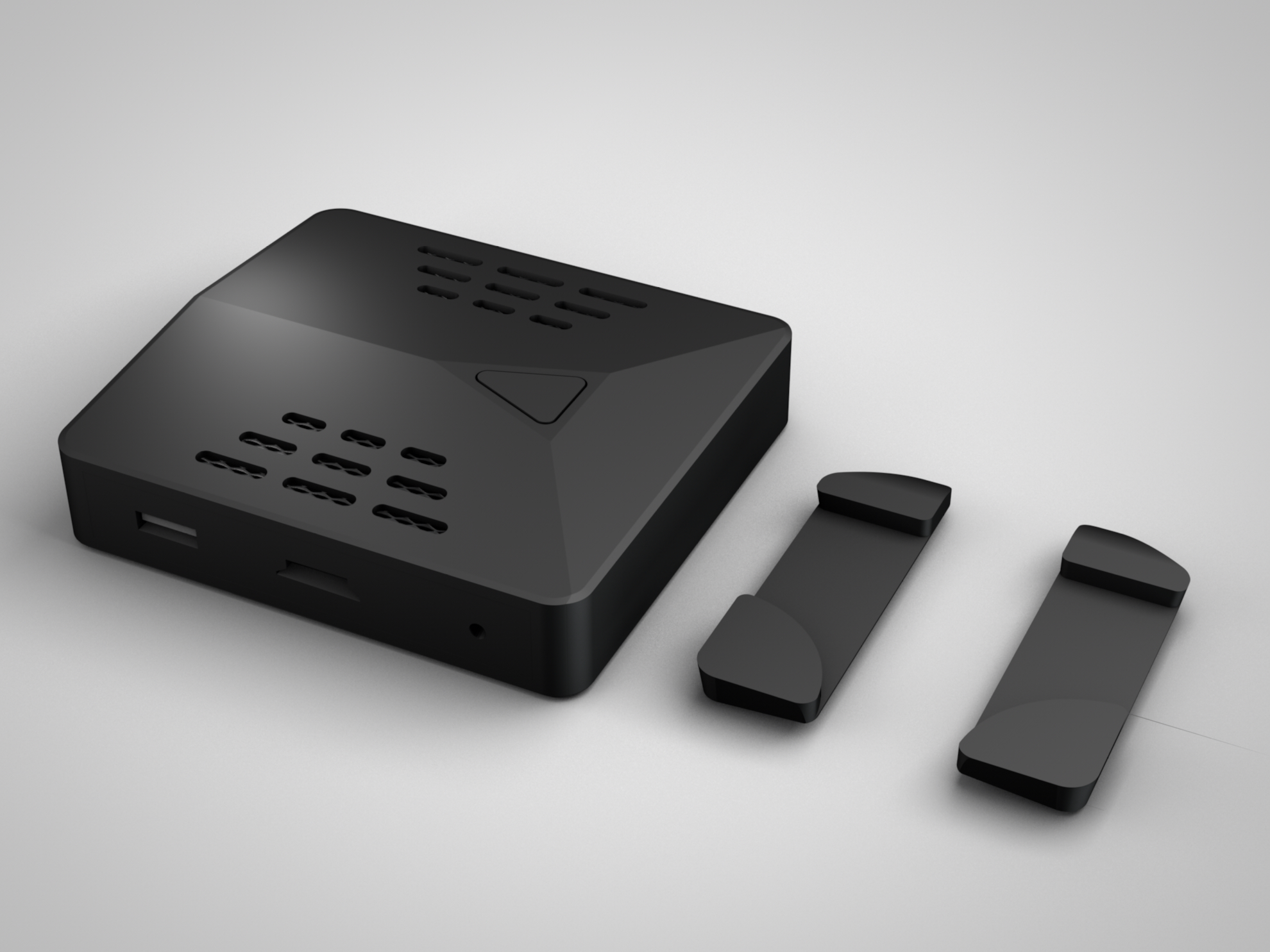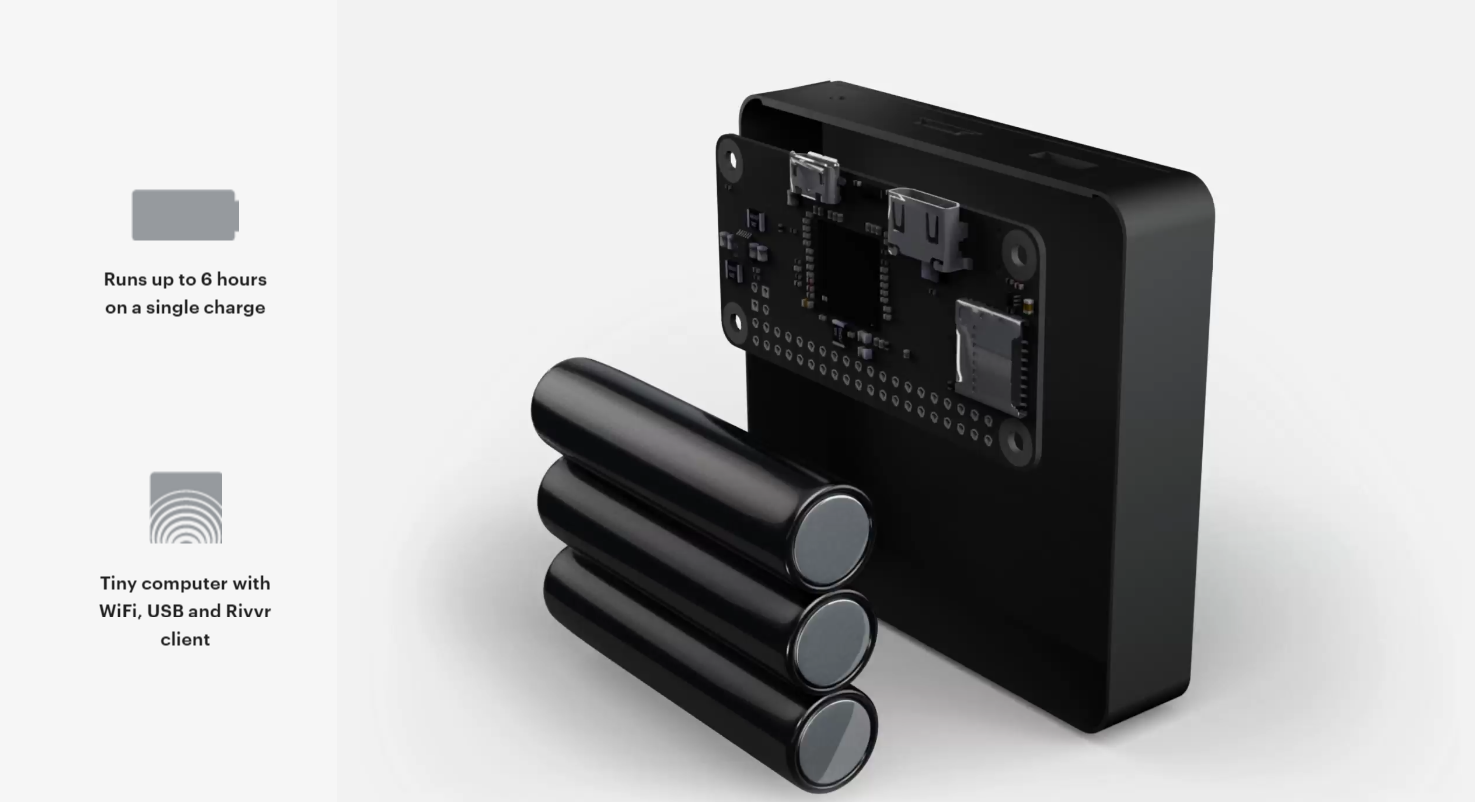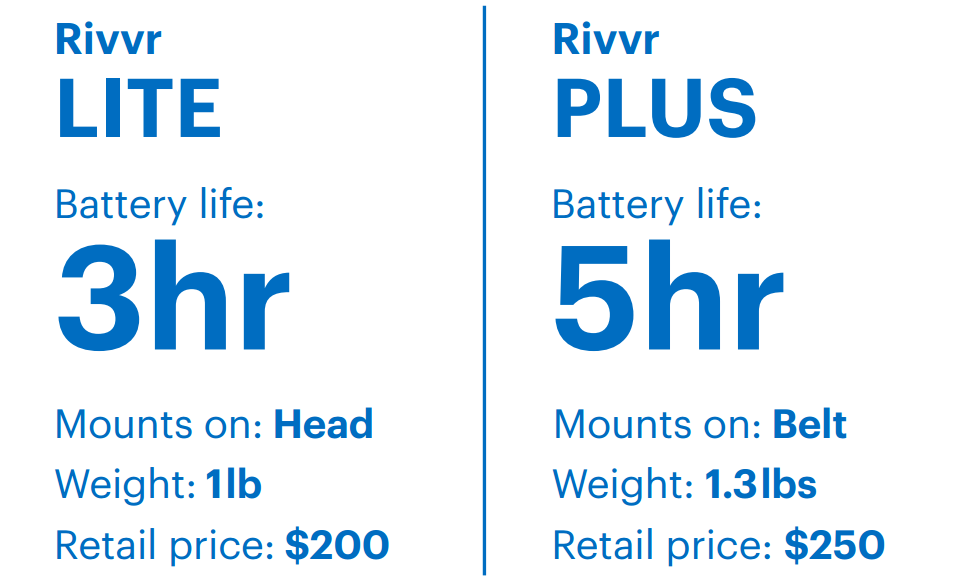Sixa’s Rivvr Wireless VR Upgrade Kit More Versatile, Cheaper Than Competition; Pre-Orders Open
Sixa opened pre-orders for a limited first run of its Rivvr Wireless VR upgrade kit. Sixa’s wireless VR solution leverages the company’s proprietary streaming technology to compress the VR signal for Wi-Fi transmission. Rivvr’s range is limited only by your Wi-Fi signal.
Wireless VR was a big theme on the CES 2017 show floor. No less than four companies showed up to the Las Vegas Convention Center with wireless solutions for VR HMDs. TPCast, which partnered with HTC to launch an officially endorsed Vive upgrade system, announced North American availability of its solution. DisplayLink revealed wireless VR technology it plans to license to HMD makers for second generation HMD designs. KwikVR announced a 5GHz wireless system that works with the Rift and the Vive and promises “less than 12ms” of additional latency. And Sixa had its Wi-Fi-based Rivvr wireless solution on hand for demos.
Sixa made bold claims about Rivvr’s capabilities that, frankly, left us a bit skeptical. Rivvr’s website states that the wireless system introduces “no latency,” is “easy to setup,” and offers “100% compatibility for all modern VR headsets,” including the Oculus Rift, HTC Vive, and more. Rivvr supposedly achieves this feat over a standard Wi-Fi connection, which is a hard pill to swallow. If it were possible to stream VR experiences effectively over Wi-Fi, surely the engineers at Oculus, Valve, and HTC would have figured it out by now.
We reached out to Sixa for a better explanation of the company’s technology and spoke with Mykola Minchenko, Sixa’s co-founder and CEO, to better understand how the claims about Rivvr could possibly be true. After our discussion, I’m far more convinced that Rivvr could be a dominant player in this new wireless VR kit space. Especially because Sixa has an ace up its sleeve that could leave the competition in the dust.
Real-Time Streaming Is Sixa’s Forte
Sixa is new to the VR market, but it’s no stranger to streaming data over networks. Sixa’s main business is a cloud-based desktop hosting service. You can rent a cloud-based desktop that lets you play games, edit video, or do anything else you would do with a high-end desktop or workstation system. If Sixa can stream a triple-A game experience over the internet, it should be a walk in the park to stream within a local network. Sixa’s proprietary compression algorithm allows the company to compress a raw HDMI signal, which can exceed 10Gbps, down to a 40Mbps signal that you can send over Wi-Fi without issue.
To demonstrate that the technology works as advertised, Ievgen Nechaiev, Sixa’s CTO and other co-founder, played with a Vive equipped with a Rivvr wireless kit during our Google Hangouts conversation. Nechaiev streamed the first person view of the gameplay and webcam view of himself playing Tilt Brush and Space Pirate Trainer, while Minchenko was on another webcam on the same network.
Of course, an over-the-internet streamed demo is hardly the same as experiencing the hardware for ourselves, though it did show that the Rivvr wireless system doesn’t introduce significant latency. Minchenko said that the current version of Rivvr adds 11ms of latency to the pipeline, but he expects to have the transfer down to 6ms for the retail kit.
Get Tom's Hardware's best news and in-depth reviews, straight to your inbox.
For comparison, TPCast claimed that its system introduces as little as 2ms of latency, but TPCast’s hardware requires a line-of-sight connection. Sixa’s real-time streaming solution works over a standard 2.4GHz or 5GHz Wi-Fi connection and doesn’t require an additional transmitter. Further, because Rivvr leverages Wi-Fi, the kit’s range is limited only by your Wi-Fi signal.
VR From The Cloud?
The Rivvr wireless VR upgrade kit is just the beginning. Sixa has a grand vision that goes far beyond tether-free HMDs: The company is building a platform to remove the desktop PC from the VR hardware equation.
Minchenko explained that by combining the Rivvr hardware and Sixa’s cloud desktop technology, the company can build solutions for schools that operate up to 16 VR HMDs from one server with an enterprise level GPU. With such a system, each student in a classroom could have his or her own VR HMD connected via Wi-Fi to explore educational VR experiences from a few servers on the school’s network.
Sixa isn’t stopping at local server-based VR experiences, either. Minchenko’s ultimate vision for wireless VR includes offering a PC-free solution for people who don’t have a VR-ready machine and don’t want to invest in one. Sixa plans to expand its cloud-based desktop computer service to offer VR gaming over Rivvr-equipped headsets. Theoretically, you wouldn’t even need a computer in the house--just a Wi-Fi connection and a Vive.
Minchenko told us that Sixa could offer such a feature with the Rivvr wireless kit because it has an embedded SoC that is roughly as powerful as a Raspberry Pi Zero. The onboard processor receives the incoming stream and feeds it to the HMD. If the stream comes in without adding significant latency, it doesn’t matter if the feed originated from a server that’s 10 feet away or in the next state over.
Sixa’s VR streaming concept could open the doors to high-end virtual reality for many people. No matter how cheap VR-ready PCs become, some people don’t want a high-end (read: expensive) computer. Many people get by with a tablet or even just a smartphone. Those people may not want a PC, but VR experiences may still interest them. Sixa’s ultimate vision for Rivvr gives those people a chance to have a desktop-class VR headset and experiences without having to invest in a dedicated computer.
Compatible With Multiple HMDs
Sixa said Rivvr works with more than just the Rift and Vive. With affordable VR HMDs from Microsoft’s partners coming around the corner, an affordable, wireless, PC-free VR system may be within grasp soon. Minchenko said he isn’t working with OSVR, though, and hasn’t tested the Rivvr system with an OSVR Hacker Developer Kit.
Two Versions
Sixa is offering two versions of the Rivvr wireless kit. Rivvr Lite provides 3 hours of battery life and mounts to the back of the HMD’s head strap. The kit weighs 1lb, but Minchenko said the extra weight helps balance the front-heavy Vive HMD. If three hours isn’t enough playtime for you, Rivvr Plus offers an extended battery with five hours of life. The larger battery brings the weight up to 1.3lbs, but Rivvr Plus doesn’t mount to the HMD, it rests on a belt.
Minchenko said the smaller kit includes short data cables for the Vive HMD. You could also use the long cables and attach the box to your belt. The Rivvr Plus module doesn’t include shorter cables for the head mount.
Pre-Order Now
Sixa launched pre-orders for the first run of Rivvr wireless VR kits todaym which is capped at 4,000 units. Minchenko explained the company is small and can’t afford to set aside more capital for a larger initial order, but he is prepared to place a second order before the first one ships to customers if the demand is there. It’s important to note that Sixa is foregoing the common crowdfunding model. The company is already committed to a 4,000-unit order, which means Rivvr is coming to market whether the batch sells out or not.
We’re reserving judgment of the technology and hardware until we’ve had a chance to try the kit out for ourselves, but on paper, Rivvr shows a lot of promise. Further, at $200 for the Rivvr Lite and $250 for the Rivvr Plus, Sixa is undercutting the competition while offering a platform with more potential. If you want to get your hands on one of the first Rivvr units, you can order one through the company’s website.
Kevin Carbotte is a contributing writer for Tom's Hardware who primarily covers VR and AR hardware. He has been writing for us for more than four years.
-
WFang So if it adds 6 to 11 ms of additional latency, it ranges from 'nearly impossible' to 'impossible' to render at 90Hz? What am I missing?Reply
Unless the GPU somehow is able to (or currently already do) scan outs of an image frame before the full image has been compiled, I don't see how adding 6 to 11ms of transfer time to a render pipeline that already uses a big chunk of that time can work comfortably? -
lasvideo Thats a rather bold claim based on a very limited experience with the product. I tend to put more faith in Testeds more thorough vetting of TPCast. And its analysis based on that test. https://www.youtube.com/watch?v=Z-CWz8nAFgsReply -
Jeremy Cox @WFANG The ability for humans to discern the latency or delay in the frame delivery is something like 30-100ms. 10ms will not be noticeable. Case in point, most people don't notice 30ms of lag in online gaming.Reply -
lasvideo Reply19178284 said:@WFANG The ability for humans to discern the latency or delay in the frame delivery is something like 30-100ms. 10ms will not be noticeable. Case in point, most people don't notice 30ms of lag in online gaming.
Wrong! I can HEAR a 10ms delay in my music studio software when there are issues in the pipeline. It is VERY noticable and palpable. VR industry hardware devs state any video delay over 30 ms incurs nausea and put a hard target on keeping it lower then that number. ;)
-
_TheD0ct0r_ I want to know more about the "VR from the cloud" so I wont need a good PC to run it. less money to spend!Reply -
cryoburner Reply19178023 said:So if it adds 6 to 11 ms of additional latency, it ranges from 'nearly impossible' to 'impossible' to render at 90Hz? What am I missing?
The amount of time to transmit an image to a screen doesn't necessarily limit the frame rate. The computer doesn't have to wait for one frame to be completely drawn onto the screen of the headset before it can send the next one. In this case, for example, the system might spend several milliseconds compressing the current frame, a few more transmitting it, and then another few milliseconds uncompressing it on the headset's end. While the headset is uncompressing one frame, it could be receiving the next. One frame doesn't have to be completely out of the transmission pipeline before the next enters it. Of course, you'll still want to keep the latency as low as possible, since if there's too much delay it could make people nauseous, though presumably such a device could use onboard hardware to pan and scale the image after it's received it to better match the headset's current positional data.
19178284 said:Case in point, most people don't notice 30ms of lag in online gaming.
That's not exactly a good comparison, since games perform various lag-compensation techniques to hide latency. Your own movements and actions in an online game shouldn't show any additional delay at all, since the game doesn't bother checking with the server before updating those kinds of things on your end. Even for the movement of other players, well-designed netcode will use predictive techniques to estimate what their approximate position should be without having to check every frame, then adjust for any discrepancies as seamlessly as possible as their actual location data arrives. This tends to hide network latency pretty well most of the time, though sometimes those guesses can be slightly inaccurate, resulting in situations where it looks like you shot a player, for example, but they don't get hit, or where the hits from a player shooting you don't register until you're already behind cover. You might not directly see this latency, but that's largely because the game is doing its best to hide it.
Sixa isn’t stopping at local server-based VR experiences, either. Minchenko’s ultimate vision for wireless VR includes offering a PC-free solution for people who don’t have a VR-ready machine and don’t want to invest in one. Sixa plans to expand its cloud-based desktop computer service to offer VR gaming over Rivvr-equipped headsets. Theoretically, you wouldn’t even need a computer in the house--just a Wi-Fi connection and a Vive.
Now this I would be a bit skeptical of seeing pan out, at least any time within the next several years or more. In order for this to work, you would need really low latency to the render servers, since on-headset adjustments to the video feed can only go so far. The latency would really add up between not only the time it takes to transmit the video to your headset, but also for the headset to transmit its positional data to the server. The servers would likely need to be located near your town, and aside from in some urban centers, that would be difficult to accomplish. Existing game-streaming services introduce enough delay and compression artifacts to make even traditional games somewhat uncomfortable to play, and those issues would be greatly compounded in VR. -
therealduckofdeath @Wfang, you're comparing apples to pears. Input lag and display refresh rates aren't really connected. You can have a billion Hz refresh rate with a billion years lag. In a more real comparison, a lot of the 144 Hz displays we can buy they use VA panels. A VA panel generally adds 10-30 ms lag.Reply -
bit_user 250x compression is a lot. This is only possible with full-frame analysis, which imposes a lower-bound on the amount of latency it will add.Reply
I would much rather see a higher-frequency wireless tech and lower compression. Also, I don't know how well their solution would deal with packet collisions & other types of errors.
Line of sight isn't really a problem, for VR, since you typically have a dedicated VR space, anyhow.
-
bit_user Reply
Yes, I've been saying that ATW belongs in the HMD. This will definitely help hide wireless transmission delays. However, I doubt they're currently doing this, since it would require deep integration with the HMD and/or game engine. You definitely don't want to do ATW twice, as it's not without latency or artifacts. HMD-based ATW would be an absolute necessity for any kind of remote rendered VR.19179588 said:presumably such a device could use onboard hardware to pan and scale the image after it's received it to better match the headset's current positional data.
I think your skepticism about remotely rendered VR is well-placed. These guys might just be overly optimistic, but they might also be saying anything they can to pump up the valuation of their company (either for acquisition or VC funding purposes).




